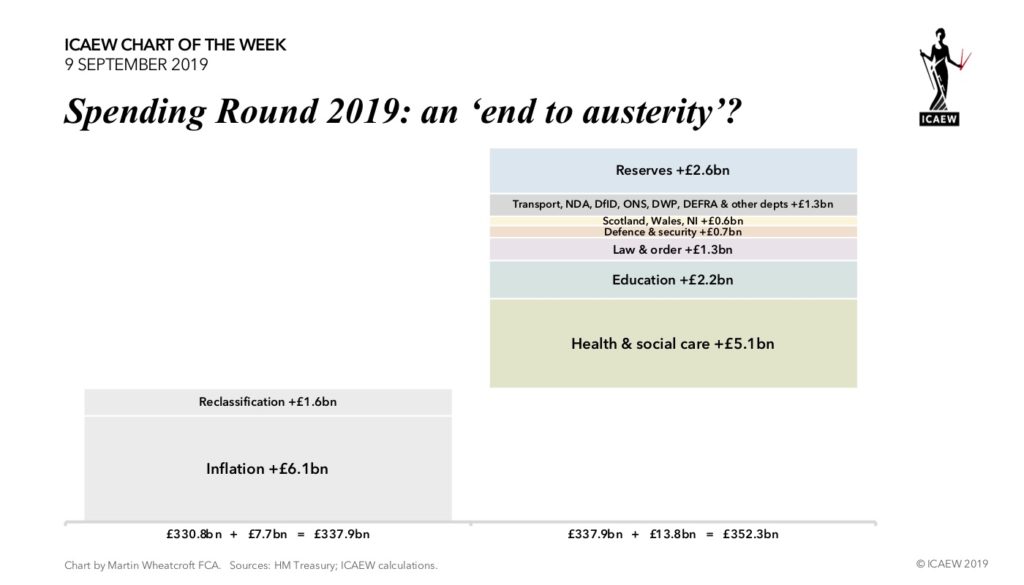
On 4 September 2019, the Chancellor of the Exchequer announced the UK Government’s plans for departmental spending for the next financial year, 2020-21; as illustrated by the #ICAEWchartoftheweek.
This was unusual, as the announcement was not accompanied by a Budget setting out how those plans would be funded, nor by updated economic forecasts to indicate the expected effect on the overall public finances. This is also the second year running that the three-year Spending Review has been delayed and replaced by a one-year plan.
The primary announcement was for an increase of £13.8bn in departmental current spending in the next financial year (2020-21), a 4.1% real-terms increase over the current financial year. This was £11.7bn more than had been previously included in public finance forecasts and increases ‘Resource DEL excluding depreciation’ to £352.3bn.
There is an extra £4.1bn for health, £1.0bn for social care, £2.2bn for education, £1.3bn for law & order, £0.7bn for defence and security, £0.6bn for devolved administrations, and £1.3bn in other increases. The latter includes £0.4bn for transport, £0.2bn for the Nuclear Decommissioning Authority, £0.1bn for international development, £0.1bn for the next census, £0.1bn for the Department for Work & Pensions, £68m for air quality, biodiversity and animal health, £54m to tackle homelessness, and £46bn for the Birmingham Commonwealth Games.
The Chancellor also announced that departmental capital spending would increase by £3.9bn or 5.0% in real terms. This is £1.7bn more than had previously been announced and increases ‘Capital DEL’ to £81.9bn. There is £2.2bn for transport infrastructure (including HS2, other rail projects and road building), £1.9bn in additional international development investment, £0.5bn for the defence equipment programme, and £0.5bn for Scotland, Wales and Northern Ireland, partially offset by £1.2bn in lower reserves and other changes.
Although department current spending is expected to rise by 4.1%, and capital spending by 5.0%, the overall increase in total managed expenditure in 2020-21 is a 2.4% rise to £865.2bn, with annually managed expenditure (‘AME’) relatively flat in real-terms. With the cost of pensions rising ahead of inflation, this implies further cuts in the welfare budget, and so this may not be the full ‘end to austerity’ claimed by the Chancellor.
The uncertain economic outlook also causes concern. A recession, whether or not induced by Brexit, could have adverse consequences for the public finances, raising the worrying prospect of a return to austerity in the three-year Spending Review now scheduled for next year.